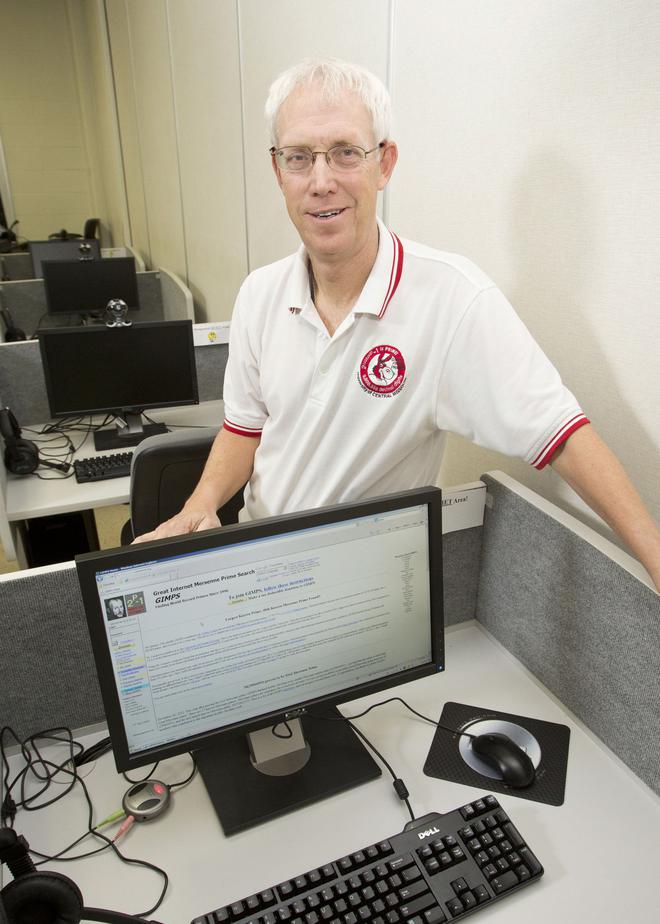You know what prime numbers are, don’t you? A whole number greater than 1 that has no factors other than 1 and itself is referred to as a prime number. These numbers have been known and researched for a long time and are intertwined with our lives in more ways than we can imagine.
Prime numbers of the form 2n-1 are referred to as Mersenne primes. Mersenne primes have become extremely popular as the largest known prime numbers are all of this type. This has even led to the creation of an active programme to find out more Mersenne prime numbers.
Distributed search programme
This distributed search programme across the internet, known as GIMPS (Great Internet Mersenne Prime Search), sees hundreds of volunteers pitch in to perform pieces of this search by employing their personal computers. As a result of this voluntary programme, every Mersenne prime discovered since late in 1996 has GIMPS as a discoverer.

There are 51 known Mersenne prime numbers so far. Every one of them from the 35th has GIMPS as one of the discoverers. Additionally, GIMPS participants have tested and verified all exponents below 5,33,10,629 and tested all exponents below 9,17,65,997 at least once as of September 2020.
French polymath
In case you are wondering where the ‘Mersenne’ comes from, it belongs to a French polymath called Marin Mersenne. While Mersenne is best recalled for the primes that now bear his name, his significance stems from other areas too.
Born near Oize, Maine, France on September 8, 1588, Mersenne was educated at the Jesuit College of La Fleche soon after it was founded in 1604. By 1609, he had left La Fleche to study theology in Paris, both at the Sorbonne and the College de France.
At the age of 24, Mersenne joined the austere Roman Catholic Order of Minims. Barring the years 1614-18 when he taught philosophy and theology at Nevers, Mersenne spent most of his life until his death in 1648 living in Paris.
Gathers great minds
Mersenne stayed largely at the Minim convent off the Place Royale (now Place des Vosges) in Paris. It was in his cell that some of the brightest minds of 17th Century France gathered. This included the likes of Rene Descartes, Pierre Gassendi, Thomas Hobbes, and Blaise Pascal, and they discussed everything from Galileo’s experiments on motion and the discovery by Evangelista Torricelli that air has weight. It was also in this cell that the young Pascal met the older Descartes in 1647, a year before Mersenne’s death.
Working during a period when many philosophers were unsure as to whether they could know anything for sure – the sceptical crisis – Mersenne decided not to worry about the ultimate causes, and instead concentrated on what we can know, such as effects. Thus, he became one of the first to popularise the experimental method after Galileo was able to show to the world the power of such an approach.
Precursor to Academy of Sciences
Corresponding with over 100 experimenters in Europe and passing ideas and discoveries from one to another, Mersenne created an informal, private Academie Parisienne in 1635. From this academy of correspondents stemmed the French Academy of Sciences, France’s first scientific society, in 1666.
It was in the 1640s that Mersenne spoke about his research on numbers of the form 2n-1, now known as Mersenne numbers. Mersenne observed that if a Mersenne number of the form 2n-1 is a prime, then n is also a prime, but the converse is not necessarily true. Mersenne numbers that are primes came to be referred to as Mersenne primes.
The last Mersenne prime that was discovered without the aid of GIMPS was the 34th known Mersenne prime – 21257787-1. It was discovered by mathematicians David Slowinski and Paul Gage, who were computer research scientists working at Cray Supercomputers. Slowinski and Gage collaborated to discover the 32nd, 33rd and 34th Mersenne primes. Slowinski also collaborated with Harry Nelson to discover the 27th Mersenne prime, and was also behind the discovery of the 28th, 30th and 31st, bringing his total of discoveries to seven Mersenne primes.







